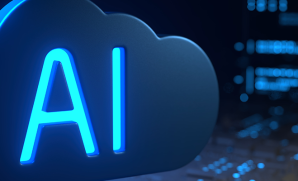Evolution of Change Management in Application Maintenance in age of digitalization
Publish Date: January 24, 2020CM has many facets involving multiple stakeholders at different levels. IT leadership has to proactively look for the possible triggers that would warrant a change function. Triggers span across the spectrum from Organizational initiatives like restructuring, optimization drives, Mergers and Acquisitions, future-proofing initiatives like technology optimization and rationalization to regular planned changes to the applications. Each of these triggers warrant a specific change strategy that determines the duration, depth, and quantum of effort involved from change function.
Organizational Changes – Restructuring:
Industry changes usually trigger organizational changes, technology disruptions driving business needs, and will have a profound impact on the entire organization. These changes often result in a redefined IT roadmap. A clinical analysis of the new direction and its impact on the current application portfolio, both from an infrastructure and a technology standpoint, is required. This analysis will help in identifying the impacted areas and will help the CM organization in defining the CM strategies. The CM function in these scenarios has to work closely with the Organization Change Management (OCM) group for alignment on communication strategies and sequencing of change activities. This trigger often has a larger impact and would require a detailed communication strategy. The CM function also needs to concentrate on process necessary changes in alignment with new IT leadership and new technology direction.
Optimization Drives:
Fine-tuning OpEx has been a constant endeavor for all organizations. OPEX optimization drives become the primary target during the downturn in business cycles. These drives often lead to application consolidation, technology rationalization, and retirement of low business value applications. CM function has to actively work with the business and IT owners in changes to their respective applications. While minimal business disruption will be the primary focus, User training, data governance, adherence to compliance requirements, and infrastructure optimization become some of the other top focus areas for CM function. CM function has to actively work in realizing the targeted cost optimizations and ensuring a faster steady state realization.
Mergers and Acquisitions:
Inorganic growth is a key strategy in some verticals and for some organizations. M&A leads to a lot of protocol refinement, system integration, application optimization, data consolidation, and integration definition in the IT estate. These changes bring in a sudden surge of changes in application estate, which have to be dealt within a finite amount of time. Any delays on the system integration will have a direct impact on synergies realization impacting the bottom line and growth optimization leading to revenue leakages. CM function should work hand in hand with the integration department to identify the impacts on IT estate and validate the integration of blueprint. System and Data Integration, Data governance, compliance, user porting, and protocol definition are the key focus areas for CM function.
Future-Proofing:
Continuous evolution through initiatives like technology optimization and rationalization ensures the relevance of the applications both from a business and a support cost standpoint. These initiatives often start with a multi-year plan for a technology upgrade, system retirement, and application merger initiatives. They bring in constant changes to the application landscape and would often test the CM function effectiveness. CM function should look at process refinement, updates to application onboarding – off boarding / entry-exit criteria, user training, and user migrations across applications as key focus areas during these initiatives.
Digitization:
Consistent user engagement, anticipating user requirements, faster time to market are some of the strategies companies are adopting to stay relevant in the new digital world. More and more organizations are adopting Digitization to survive the new competition of faster user adoption by a few organizations. New business models leveraging technology have brought disruptive changes to the traditional operations threatening the existence of the old players. Digitization brings in new ways of working, technologies, and processes to the application landscape. CM function should refine its process to adopt the new practices of DevOps and CI/CD for constant changes to the production environment.
Choose YASH as your strategic AMS partner to successfully manage your application portfolio


















